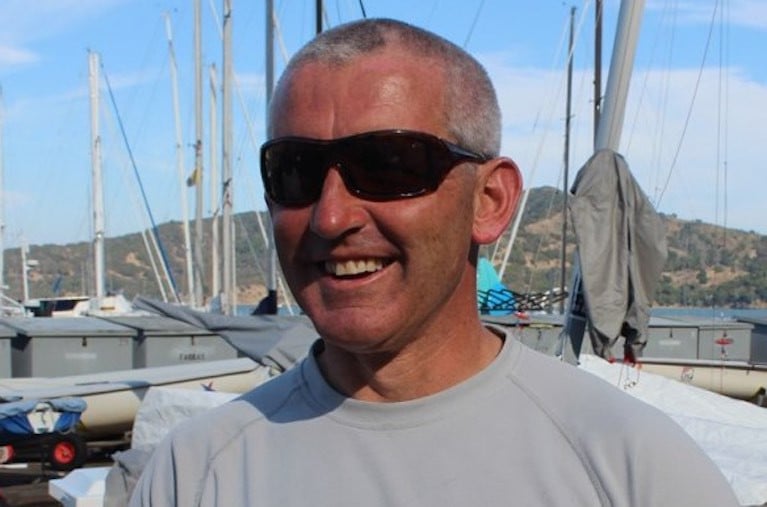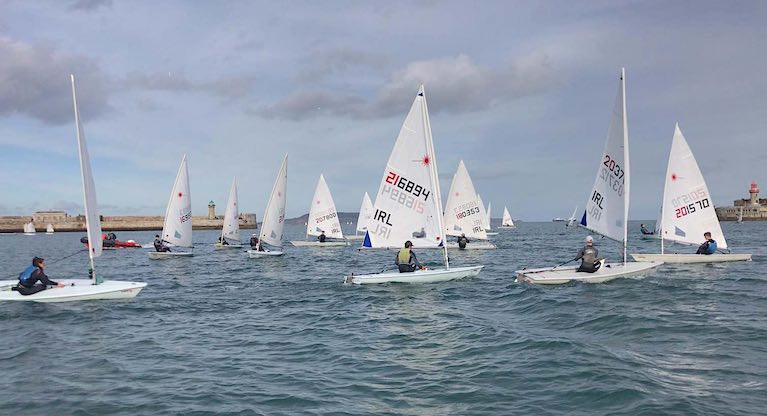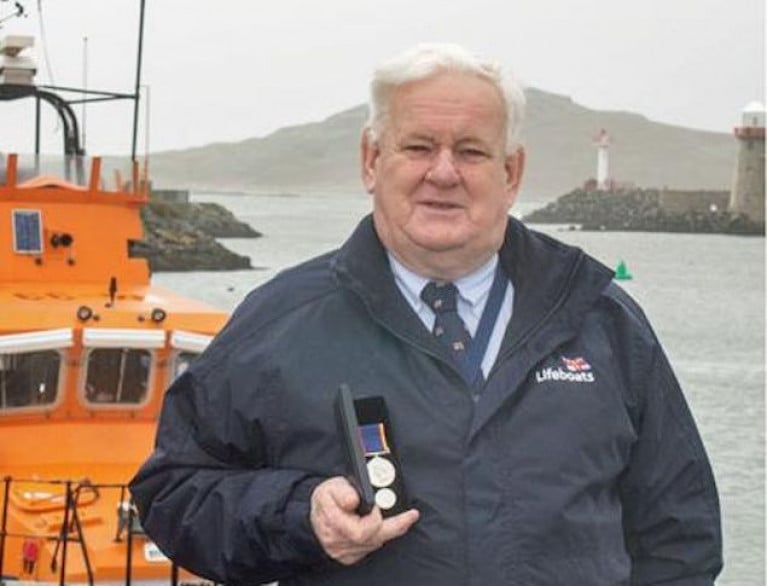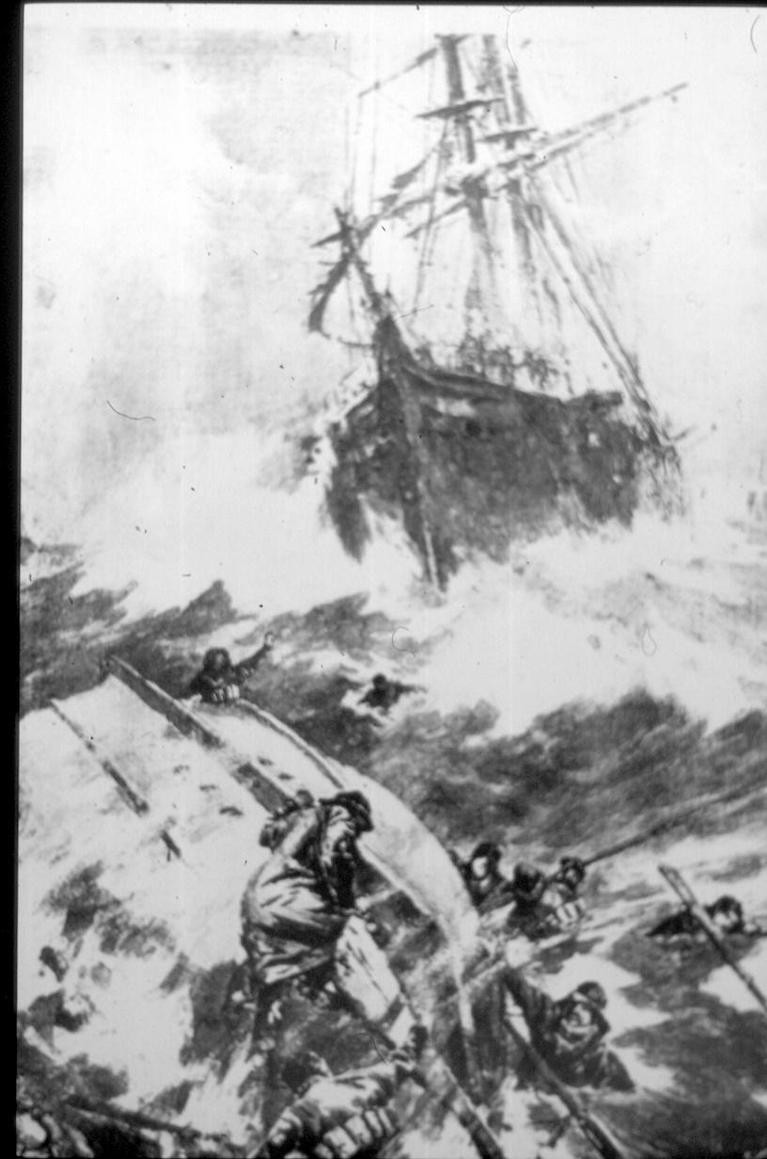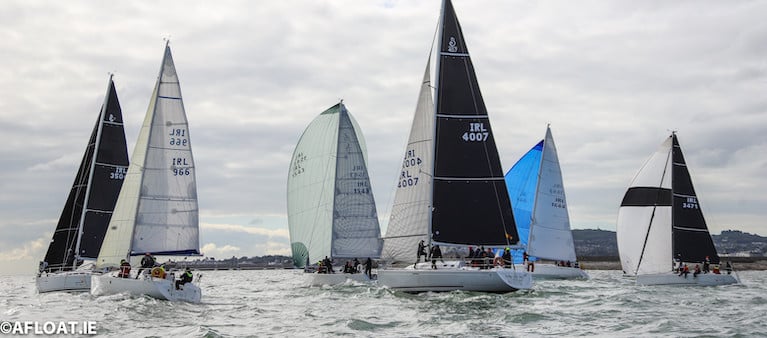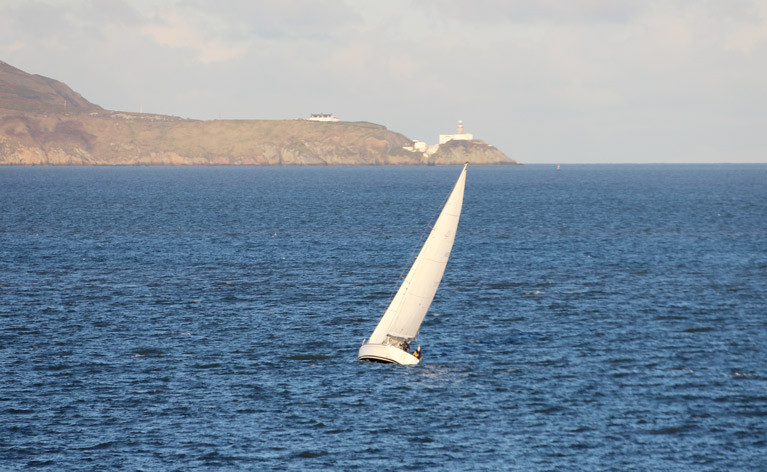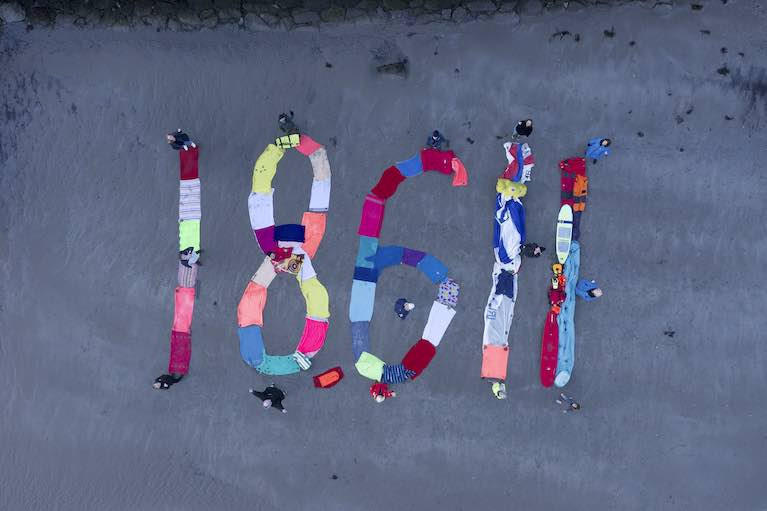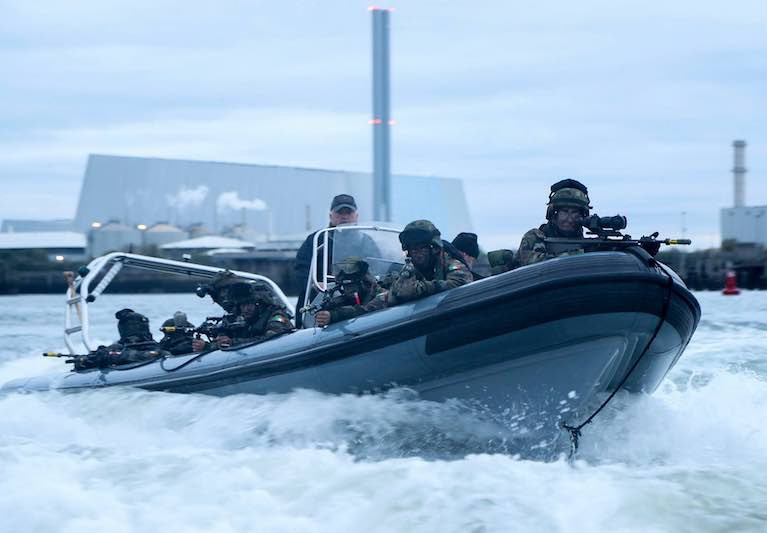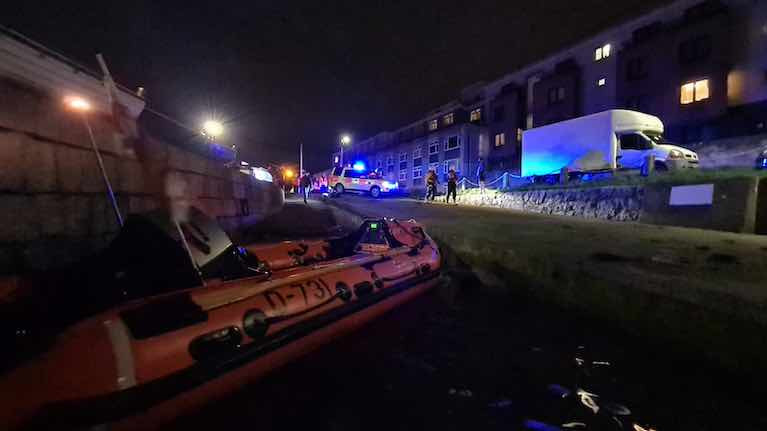Displaying items by tag: Dublin Bay
Full House for Prof’s Top Ten Dublin Bay Racing Tips at Royal Irish Yacht Club Webinar
North Sails Ireland’s Maurice “Prof” O’Connell’s top ten tips talk to RIYC Members and guests pulled in the crowds with a record-breaking 105 attending.
Prof’s insights for racing in Dublin Bay ranged on how to gain maximum advantage through adequate preparation before going afloat, through to the start line to sail trim principles/set-up and key boat handling manoeuvres for rounding marks.
Prof brought the audience through Dublin Bay geography and topography, the DBSC course card design, logic, mark locations and geometry as well as Dublin Bay currents.
He talked through the importance of correct onboard communications and providing clear information fundamental to sailing the correct course.
Prof, who never misses a DBSC race with his customers unless he is out of the country, concluded with “Rules of Thumb” for Dublin Bay racers. The talk was part of the RIYC “Home Together” series of virtual talks.
Dublin Bay Laser Dinghy Fleet Plans Another Record Season
2020 was a record season for the Dublin Bay Laser Class, and by all accounts, they’re expecting an even bigger season in 2021.
While continuous sailing has been difficult for all fleets since the start of the pandemic, the single-handed Laser fleet has fared better than most, and as a result, its popularity has surged. For the 2020 Dublin Bay Sailing Club (DBSC) summer series, the Laser had the highest number of entries compared with any other fleet, with over 90 boats registered. Entries were split across the Standard, Radial and 4.7 rigs with both adult and junior sailors taking part.
Lasers are proving to be a very versatile boat, especially in these turbulent times. Local active sailors range in age from teenagers as young as 13 right through to adults in their 50s and 60s. The fleet is also very well balanced between female and male sailors with both genders across the ages competing as equals, particularly in the Radial and 4.7 rigs.
"with the constant changes in COVID restrictions, the Laser is providing a more consistent sailing experience"
Local class captain Brendan Hughes explained why there is an expectation of even bigger numbers in 2021; “We’ve seen interest in the fleet continue to grow especially amongst adults. Many of these already sail cruisers but with the constant changes in restrictions, the Laser is providing a more consistent sailing experience. We’re the only large fleet that has been able to get out on the water in nearly all levels of lockdown.”
As a competitive single-hander, Hughes acknowledges that the Laser can be perceived by some as a challenging boat to sail. “In 20 knots, the Laser can be a challenge for sure! However, there has been a lot of effort put into training across Dun Laoghaire. Right throughout the year, there is coaching taking place for beginners and competitive sailors at both junior and adult level.” The increase in coaching availability over the past number of years is acknowledged by many new sailors as being critical in making this class more accessible.
 Dublin Bay's new Laser dinghy Class Captain Brendan Hughes
Dublin Bay's new Laser dinghy Class Captain Brendan Hughes
In addition, constant adjustments to racing formats have helped to ensure the Laser fleet remains vibrant. During 2020, the DBSC dinghy race officers introduced Saturday racing in addition to Tuesday evening racing for the Laser fleet. This proved to be extremely popular and the Laser fleet was eager to see this continued in 2021. The club has confirmed that the format will continue for the new season of the AIB DBSC Summer Series with the entry fee covering both Tuesdays and Saturdays for all sailors.
A number of headline events in 2021 taking place in Dublin Bay are expected to drive continued interest from new sailors. The Irish Laser Master Nationals event will be hosted in Dun Laoghaire’s Royal St George Yacht Club from 12th -13th June. This event is open to all sailors over the age of 35 and the organisers expect to have 50+ boats from across the country participate.
A recent survey of local Laser sailors revealed that over 120 boats intend to participate in the Volvo Dun Laoghaire Regatta One Design Championship taking place 2nd - 4th July. “If even two-thirds of that number participate in this new format, it would be the largest one-design fleet on the water at this year’s event, which is very exciting.” says Hughes.
August sees the International Laser Class Association (ILCA) 4.7 World Championship coming to Dublin Bay. Local organisers are expecting several hundred youth sailors from across the globe to participate in this event. This event will be one of the biggest sailing events to take place in Ireland this year and is a great opportunity for our younger sailors to participate on the world stage.
Afloat also hears that planning has begun amongst the Masters fleet to send a delegation to Malta in November. EurILCA, the European Laser organisation is holding its Euro Masters Regatta at Royal Malta Yacht Club from 4th - 7th November.
With a mix of local, national and international Laser events taking place in Dublin Bay this summer, it sounds like another big year for the fleet. More information on Laser sailing in Dun Laoghaire is available by emailing [email protected]
Howth Lifeboat Station’s John McKenna Awarded RNLI Long Service Medal
Howth Lifeboat Station Community Safety Officer John McKenna has been awarded a long service medal by the RNLI.
In 2020, McKenna (73) reached a milestone: 21 years of volunteering for the RNLI and saving lives at sea.
He has been telling the RNLI’s own magazine about his decision to join the RNLI in the first place, his role and how influencing people’s behaviour can be a skilful and powerful tool in lifesaving.
John works as part of a team of six in the Community Safety Team at Howth, one fo Ireland’s busiest stations.
“We all work together to educate and give free water safety advice to everyone who visits the coast in our local communities, from walkers to sailors. As the Community Safety Officer, I lead and help coordinate the team, he told the magazine.
Every lifeboat station has a Community Lifesaving Plan which identifies the most popular water activities within a community so that volunteers like me can give relevant water safety advice to those most at risk.
John told the RNLI “ I was at sea in a big cargo ship on the night of 9 December 1981 when the Penlee lifeboat Solomon Browne and her crew perished. It was one hell of a night. We made a collection from all onboard and sent it to Penlee. The tragedy also inspired me to become an Offshore RNLI member.
Then 14 years later, on 16 November 1995, I was driving home from Belfast after spending a week on a ferry as senior officer. As I was coming into Howth, I could hear a helicopter. I drove along the harbour and saw the trawler Scarlet Buccaneer being thrown up and down the harbour wall and the lifeboat crew trying to save the fishermen onboard. It was horrendous. There was a full gale blowing. The next day I saw the wreck of the Scarlet Buccaneer in two halves. Thankfully, the lifeboat crew managed to rescue all four fishermen but sadly one died on the way to the hospital. I decided there and then that if I ever got a shore job, I would become an RNLI volunteer.
More of the interview with John McKenna is here
Dublin Bay Old Gaffers Will Show That Worse Things Can Happen at Sea
If you think that life is tough under the current pandemic, then the Dublin Bay Old Gaffers Association has just the thing to put current national and personal problems into perspective, with a comprehensively illustrated Zoom talk by noted maritime historian Cormac Lowth on the tragic Palme Shipwreck and the Dublin Bay Lifeboat Disaster of Christmas 1895.
On Christmas Eve 1895, the sailing ship 'Palme' was wrecked in Dublin Bay. A lifeboat from the Dun Laoghaire Harbour station set to try to rescue the crew of the wrecked ship.
The lifeboat overturned and all fifteen of the crew were lost, with Christmas Eve 2020 being the one hundred and twenty-fifth anniversary of the tragedy. It is essential that we remember the sacrifice of these heroic men in their attempt to save the lives of their fellow seamen, and to appreciate the efforts of lifeboat-men everywhere, who go out - whenever the call arises - to help those who are in peril on the sea.
Cormac F. Lowth with be giving a profusely illustrated and detailed account of the shipwreck and the tragic events that followed on Thursday, January 14th 2021 at 8.0pm – please check-in at 7.30 pm, clicking on this link to join the meeting.
Lifeboat donations can also be made here
Two Early 2021 Dublin Sailing Fixtures Impacted By COVID
Two of 2021's early-season cruiser-racer sailing fixtures on Dublin Bay are up in the air due to January's lockdown restrictions.
A new ISORA 'Early Season Series' originally planned for this month was to continue the offshore's body's successful 2020 coastal racing out of Dun Laoghaire Harbour. However, the current lockdown has put paid to those plans, leaving ISORA boss Peter Ryan to reschedule.
"We had planned for January but that's not going to happen. So, rather than cancel, we will reschedule those races into a potentially tighter programme as soon as possible", Ryan told Afloat.
The 2020 ISORA Coastal Series attracted a dozen or more entries and typically involved a race using virtual marks along the County Dublin and Wicklow coasts.
Ryan's offshore enterprise won him an end of the year gong. The NYC sailor took an Afloat Sailor of the Month Award in December for his success in staging an ISORA series in lockdown in 2020.
DBSC Spring Chicken
Meanwhile, following the total abandonment of its popular Turkey Shoot pre-Christmas event, the hope is that Dublin Bay Sailing Club will be in a position to run its Spring Chicken Series that starts traditionally in the first week of February.
The series of six races are held on Sunday mornings and organised by DBSC attracting as many as 40 boats.
However, as COVID lockdown restrictions are set to continue nationally until January 30th, fears are that there is now every chance that restrictions could also impact DBSC's spring fixture too.
The popular Spring Chicken format features short, sharp races typically of around one hour in duration.
In a new year announcement, DBSC was named as 2021 Sailing Club of the Year for its achievements in keeping sailing going on Dublin Bay during the lockdown in 2020.
New Year's Day Sails on Dublin Bay
Boaters in the capital's waters celebrated a bright but cold New Year's Day with several sailing cruisers taking a tack on Dublin Bay yesterday, empty except for three or four Dublin Port bound cargo ships moored in the southern bay anchorages.
There was some small dinghy activity too in and around Dun Laoghaire Harbour with a number of single-handed Laser sailors enjoying the chilly but good sailing breeze of ten to fifteen knots.
Motorboats, including several RIBs and smaller sized runabouts, also took advantage of the winter sunshine and headed south from Dun Laoghaire Marina to nearby Dalkey Island for a quick spin, passing a steady stream of sea swimmers at the Forty-foot bathing place.
Boating Lockdown
New Level 5 COVID-19 lockdown measures mean all organised sailing activity nationwide has been stopped.
In Dun Laoghaire, this led to the cancellation of DMYC's Christmas Cracker event and even January's RS Aero training at the National Yacht Club has been scrubbed in line with Government guidelines.
Elite sport, however, is permitted and in sailing's case this is based at the Irish Sailing's High-Performance HQ but it is unclear how much training there will be at Dun Laoghaire with some of the squad scheduled for a critical winter camp in Portugal.
Live Dublin Bay webcam here
Swimmers 'Towelling Inferno' Protest Over Dublin Bay Water Quality
A “giant-size” towel collage has been spread out at Blackrock’s Seapoint shoreline in Dublin Bay on Saturday to highlight the need for action over Dublin Bay water quality.
Open water swimmers suspended hostilities over whether dry robes or towels were more socially acceptable to participate in the peaceful initiative - at a social distance.
SOS Dublin Bay, which organised the gesture, is calling for increased testing of bathing water quality.
It is seeking real-time reporting of results “in recognition of all-year-round bathing which has become more common in Dublin”.
SOS Dublin Bay chairman Gerry Jones said record numbers of people were now swimming in the bay all year round.
He said that “local authorities need to recognise this reality by ensuring that bathing water quality readings are provided on an ongoing basis to the general public”.
He said there should be regular publication of all appropriate public health guidance particularly when the water is polluted.
“Thousands of people are now taking to the waters in Dublin Bay every day, yet we are simultaneously witnessing the appalling spectacle of raw sewage being dumped into the bay at Ringsend after heavy periods of rainfall,” he said.
 A scene at the Forty Foot bathing place at the southern tip of Dublin Bay during Winter 2020
A scene at the Forty Foot bathing place at the southern tip of Dublin Bay during Winter 2020
“We can’t put people’s health on hold while we wait for a promised upgrade of the Ringsend sewage treatment plant which won’t happen till at least 2025,” he said.
There are “ creative interim solutions” at to prevent Irish Water dumping sewage into the Liffey estuary and onward into the bay, he said, and SOS Dublin Bay aims to publish several proposals in the new year.
The Environmental Protection Agency (EPA) has acknowledged the risks to water quality after periods of heavy rainfall which result in overflow from storm drains and from the Ringsend sewage treatment plant, among other sources.
Rainwater run off at Sandycove Point on Dublin Bay from Afloat Magazine on Vimeo.
However, it says it is awaiting a review of the EU Bathing Water Quality directive before recommending any legislative changes to allow for greater frequency of , and more detailed scope of, testing here.
Under current regulations, local authorities are only required to test bathing water quality once a month between May and September. Some local authorities test more frequently, but results are slow.
The tests under the EU bathing water quality directive are limited to E.coli (EC) and Intestinal enterococci (IE), based on World Health Organisation research.
 Dublin Bay swimmers call a truce in Dry Robe wars and lay out their towels in support of a cleaner Dublin Bay - 18611 is the current number of signatures to the online petition for a cleaner bay Photo: One minute forty
Dublin Bay swimmers call a truce in Dry Robe wars and lay out their towels in support of a cleaner Dublin Bay - 18611 is the current number of signatures to the online petition for a cleaner bay Photo: One minute forty
University College Dublin (UCD) microbiologist Prof Wim Meijer explains that most E.coli are harmless.
However, VeroToxigenic E coli strains, contracted from ingesting water contaminated with animal faeces or from undercooked meat or contaminated salads, produce a powerful toxin which can cause “a range of symptoms, from bloody diarrhoea to kidney failure and may cause fatalities”
Prof Dearbháile Morris, director of NUI Galway (NUIG) Ryan Institute’s Centre for One Health, said current testing systems are outdated, as they only look for the total number of e-coli in a 100ml sample and not the detail.
A system for live bathing water monitoring named EU SWIM is at an advance stage, co-ordinated by UCD computer scientist Prof Gregory O’Hare and involving Prof Meijer.
The SOS petition is here
Irish Defence Forces To Carry Out Military Exercise in Dublin Docks
The Irish Defence Forces say they will be conducting a military exercise in the Poolbeg area of Dublin Docks tomorrow morning between 6 & 9.00 am
The exercise aims to test junior leaders in a Military Operations in Urban Terrain (MOUT) environment & will involve low flying helicopters, boats & pyrotechnics.
The 'public notice' was posted via the Defence Forces Facebook page.
Dublin Bay Sea Fog is No Barrier for Dinghy & One Design Keelboat Sailing at Dun Laoghaire Harbour
There was plenty of sailing at Dun Laoghaire Harbour today as Laser, RS Aeros, Toppers and Optimist dinghy fleets enjoyed some great breezes even if a sea-fog reduced visibility for a time even within the harbour confines.
Up to 30 dinghies were afloat at the venue for the ideal 16-knot north-westerly training sessions that also saw the National Yacht Club's Elliot six-metre match racing keelboats on the water as well Flying Fifteens.
The much-anticipated DBSC Turkey Shoot training for cruiser-racers did not take place on the Bay due to COVID-19 restrictions.
 A safety RIB on patrol in Dun Laoghaire Harbour as Optimist dinghies are shrouded in mist
A safety RIB on patrol in Dun Laoghaire Harbour as Optimist dinghies are shrouded in mist
 The scene in nearby Scotsman's Bay with a view of Sandycove Harbour
The scene in nearby Scotsman's Bay with a view of Sandycove Harbour
 Flying Fifteens sailing at Dun Laoghaire Harbour Photo: Chris Doorly
Flying Fifteens sailing at Dun Laoghaire Harbour Photo: Chris Doorly
 Laser and RS Aero dinghies in the winter sunshine and mist at Dun Laoghaire Harbour Photo: Janet Thompson
Laser and RS Aero dinghies in the winter sunshine and mist at Dun Laoghaire Harbour Photo: Janet Thompson
Dun Laoghaire Harbour RNLI Rescue Two Missing Divers off Bullock in Fast Flowing Current
Last night Dun Laoghaire Harbour RNLI lifeboat station’s inshore lifeboat was requested to launch by the Irish Coast Guard to respond to reports of two missing divers near Bullock Harbour
The volunteer crew of three launched swiftly into the darkness at 11:06pm and made their way in the direction of Bullock Harbour arriving on scene at 11:15pm. The crew quickly assessed the situation and started to search the area around the outside of the harbour. The two casualties, who had been carrying out night diving training, were quickly located exhausted and trying to make their way back to shore having been caught by fast flowing currents.
The two divers were transferred on board and casualty care assessed by the volunteer crew. They confirmed that they were both very cold but in good health, they were taken ashore in Bullock Harbour aided by Dun Laoghaire Coast Guard Unit and then taken into the care of the National Ambulance Service.
Weather conditions at the time were described as calm with good search visibility.
Speaking following the call out, Nathan Burke Dun Laoghaire RNLI Helm said: ‘It has been Dun Laoghaire lifeboat stations busiest year to date, having been launched over 90 times with a dedicated crew turning up in numbers to every request. Tonight, was no different and our crew’s speedy response was a major factor in ensuring the outcome of this situation was a positive.’
‘The two divers and the other members of the group who were on shore did the right thing tonight by quickly contacting the Coast Guard when the two divers did not return to shore. The group also had the correct equipment for their training. Fortunately, both casualties are in good health. Our crew are very pleased with the outcome and happy to have safely returned them to shore’.



























